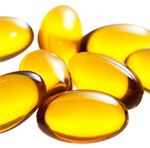
Retinoids are forms of vitamin A. Though there are multiple forms of retinoids, when looking to understand the roles of these different forms in skincare applications, one of the primary distinctions is between retinol and retinoic acid (also known as tretinoin, or by brand name Retin A). Many consumers confuse the two, or do not know the difference between them. The most important difference between retinoic acid and retinol (also retinal, retynl palmitate) is that only retinoic acid directly affects skin cells. Other forms will be partially converted to retinoic acid when applied to the skin, so some benefits will still be experienced, but there is a substantial difference in their effectiveness. The first thing to understand is that there is a big difference in the impact of using true retinoic acid vs. retinol.
Of course, there is a flip side to this. While it is true that retinoic acid is much more biologically active, and therefore much more effective than retinol, it is also prone to more serious side effects. All retinoids can irritate the skin and cause sensitivity to light. In the case of retinoic acid these side effects can be more serious. Another important issue is that retinoic acid is only available through a physician, so the ease of access and the cost may not be the same as that of over the counter products with retinol.
While they were first used to treat acne over 20 years ago, dermatologists and scientists soon realized that retinoic acid also had anti-aging properties that went beyond the purely cosmetic. Retinoids are knows as cell communicating agents, because on a molecular level, they help skin cells communicate and function normally. This is important because typically as skin ages the cells do not communicate as well, so by improving this communication, retinoids help to reverse the process of skin aging. As a result, there are a number of proven benefits. This improved cell communication stimulates faster growth of new cells in the top layers of skin, which makes the skin brighter and smoother. Pore size and appearance, in addition to skin pigmentation caused by sun damage, age spots and melasma, are all reduced. Protection from new damage is also improved.
One notable and important characteristic of all retinoids is that they are all highly unstable, and if exposed to oxygen they break down and are no longer of any use to treating skin. This is why the better retinoid products use pumps or other types of packaging that do not allow air into the container.
